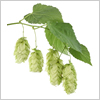Your cart
Bedrijfsnieuws

 Germany: Hop farmers reducing fields amid surplus
Germany: Hop farmers reducing fields amid surplus
In response to a significant surplus of hops in Germany, many hop farmers are taking action by clearing portions of their fields. This decision comes after a dramatic drop in prices for two popular German hop varieties, with some prices plummeting by as much as 90 percent. The situation has prompted farmers to reconsider their cultivation strategies, The Munich Eye reported on April 8.
According to the German Hop Growers Association, the prices for aromatic hop varieties such as Perle and Hallertauer Tradition have fallen drastically, with current prices hovering around one euro per kilogram, a stark contrast to the ten euros per kilogram observed just a year ago. This decline has placed many farmers below their production costs, leading them to reevaluate their operations.
Industry experts suggest that the global hop cultivation area needs to decrease by approximately 5,000 hectares, representing around 9 percent of the current total. In Germany alone, a reduction of about 2,000 hectares is considered necessary. The German Hop Growers Association estimates that a reduction of 1,000 to 2,000 hectares is realistic to stabilize the market.
Despite the challenges faced, Germany is likely to retain its title as the world's largest hop producer. The United States, currently in second place, would also need to cut back approximately 2,000 hectares to maintain balance in the market.
The decline in demand for aromatic hops has also been influenced by changes in brewing recipes among large breweries. Many brewers are opting for varieties with higher alpha acid content, which contributes to the bitterness of beer. These high-alpha varieties are often more productive, allowing brewers to utilize less acreage. For instance, one hectare of the Herkules variety can replace three hectares of Perle.
As the market adjusts, the exact amount of land that will be cleared remains uncertain, as each farmer must make individual decisions based on their circumstances. This uncertainty complicates the situation for hop growers, who must weigh the risks of potential losses against the opportunity to profit from an eventual price increase. They face a delicate balancing act; cutting too much could mean losing out on potential income if prices rebound.
Once land is cleared, it takes time for new hop plants to mature and become productive. Farmers will not see any yield from newly planted crops in the first year. However, experts reassure consumers that there is no immediate threat to beer supply. Sufficient inventories of the affected hop varieties exist, and other varieties will continue to be cultivated to meet demand.
Back
E-malt.com, the global information source for the brewing and malting industry professionals. The bi-weekly E-malt.com Newsletters feature latest industry news, statistics in graphs and tables, world barley and malt prices, and other relevant information. Click here to get full access to E-malt.com. If you are a Castle Malting client, you can get free access to E-malt.com website and publications. Contact us for more information at marketing@castlemalting.com .





